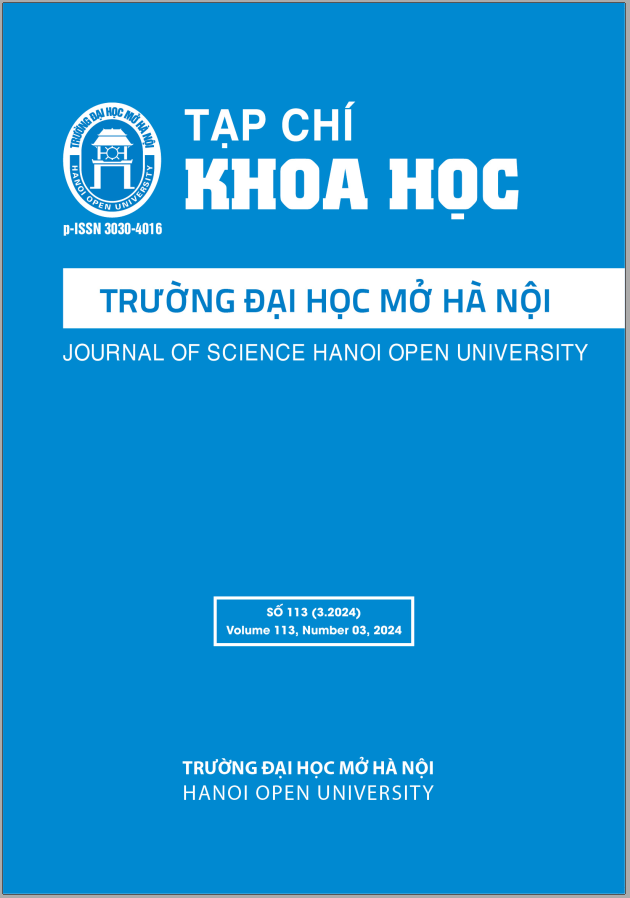NON MAJORED STUDENTS’ PERCEPTIONS OF USING GRAMMARLY APPLICATION TO ASSIST THEIR ENGLISH WRITING PRACTICE
DOI:
https://doi.org/10.59266/houjs.2024.375Từ khóa:
artificial intelligence, English writing, feedback, GrammarlyTóm tắt
English writing proficiency is crucial for university students, for both academic pursuits and future professional communication. During the acquisition of English writing skills at university, a majority of students still make serious mistakes regarding grammar, spelling, and punctuation. Giving feedbacks on students' written work is regarded as important, for it not only helps improve students’ writing skills, but motivates their frequent practice as well. Nevertheless, that teachers face recurring issues such as unequal distribution of the courses whose contents focus more on other English skills; and huge class sizes somehow diminishes the quality of their feedback. As a result, students are encouraged to utilize feedback from Grammarly, an artificial intelligence technology to aid them in their writing practice. This paper investigated how students perceive feedback from Grammarly as a tool to correct mistakes in their written work and their perceptions toward using Grammarly in the learning process. The objective was to determine the features of Grammarly and students’ perception of using technology in learning to write. This study utilized a close-ended questionnaire with five indicators of Likert scale, with participants are 60 English non majored second - year students at Dong Nai Technology University. The findings suggested that the majority of students hold a positive opinion on the use of Grammarly to aid them in learning English writing.
Tài liệu tham khảo
[1]. Cavaleri, M. and Dianati, S. (2016). You Want Me to Check Your Grammar Again? The Usefulness of an Online Grammar Checker as Perceived by Students. Journal of Academic Language and Learning, 10(1), pp.A223-A236.
[2]. Cheng, M. C. (2007). Improving interaction and feedback with computer mediated communication in Asian EFL composition classes: A case study. Taiwan Journal of TESOL, 4(1), 65-97.
[3]. Ghufron, M. A., & Rosyida, F. (2018). The role of Grammarly in assessing English as a Foreign Language (EFL) writing. Lingua Cultura, 12(4), 395–403.
[4]. Ghufron, M. (2019). Exploring an Automated Feedback Program ‘Grammarly’ and Teacher Corrective Feedback in EFL Writing Assessment: Modern vs. Traditional Assessment. ELLiC Proceedings. https://doi.org/10.4108/eai.274-2019.2285308
[5]. Hartono (2011). The Effectiveness of Grammar Correction to Improve Students' Writing. JurnalPengembanganIlmu Bahasa dan Budaya, 5(1), pp.91-103.
[6]. Nguyen, D.K.; Phan, T.T.V. & Ly, T.A.N. (2011).The Effectiveness of Activities for Teaching EFL Writing in a Context of Vietnam. Journal of Nepal English Language Teachers’ Association, 16 (1-2), 88-96.
[7]. Nova, M. (2018). Utilizing Grammarly in evaluating academic writing: A narrative research on EFL students’ experience. Premise: Journal of English Education and Applied Linguistics, 7(1), 80–96.
[8]. Perdana, I., Manullang, S. O., & Masri, F. A. (2021). Effectiveness of online Grammarly application in improving academic writing: review of experts’ experience. International Journal of Social Sciences, 4(1), 122–130.
[9]. Pratama, Y. D. (2020). The investigation of using Grammarly as online grammar checker in the process of writing. English Ideas: Journal of English Language Education, 1(1), 46–54.
[10]. Qosayere, I. (2015). The Effect of Grammar Correction on Students’ Writing. International Interdisciplinary Journal of Education, 4(1), 257–261. doi: 10.12816/0009246
[11]. Y.J. Lee, “The Long-Term Effect of Automated Writing Evaluation Feedback on Writing Development,” in English Teaching, volume 75 issue 1, 2020, pp. 67-92. [Online]. https://doi.org/10.15858/engtea.75.1.202003.67
[12]. Zhang, X. (2017). Reading–writing integrated tasks, comprehensive corrective feedback, and EFL writing development. Language Teaching Research, 21(2), 217–240. https://doi.org/10.1177/1362168815623291
